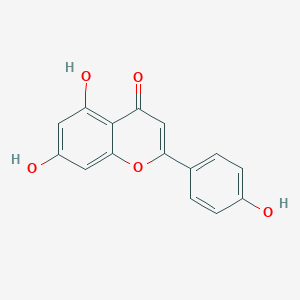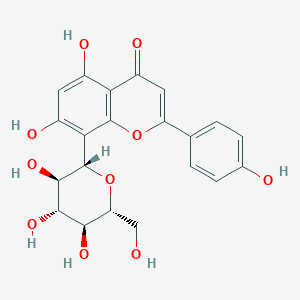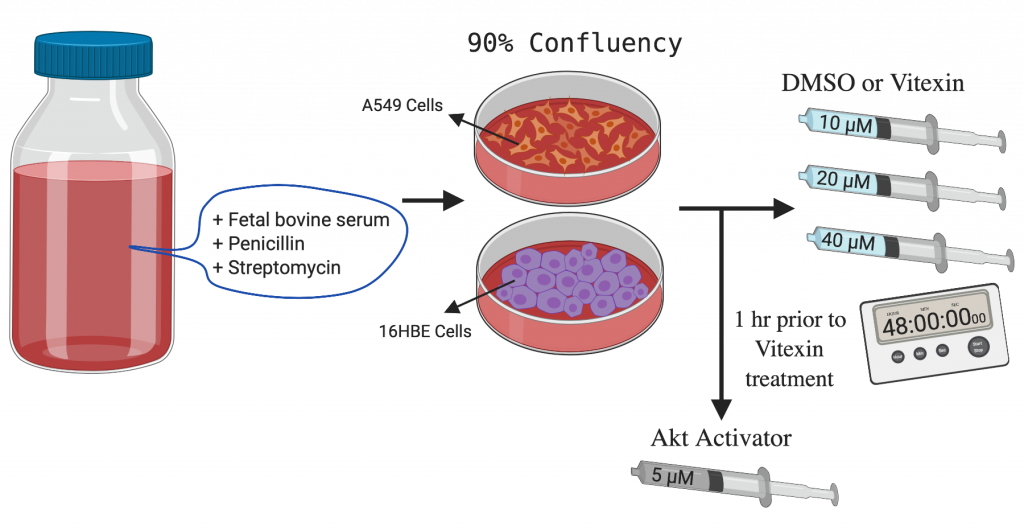7 1.2 Cell Culture and Treatment
In a 2019 paper published in Biological Research, researchers Liu et al. (2019) sought to determine the therapeutic potential for a flavonoid compound called vitexin as a cancer treatment drug.[1] To do so, researchers had to determine how to measure the effectiveness of vitexin as a cancer drug. To do so, researchers relied on A549 cells as a model for cancer. As previously mentioned in 1.1, A549 cells are derived from a lung cancer tissue culture. Because of their cancerous origin, they are considered a reliable model for cancer cells.
Using the A549 cells, researchers conducted several experiments using the methods outlined in the previous chapter. This chapter will focus on the the goal of each of those experiments and the results that the researchers reached.
What is Vitexin?
Vitexin is a flavonoid that is built from another flavone called apigenin, which is most notably found in chamomile tea.[2] Vitexin is found in bamboo leaves and passion flowers.[3] Like other flavonoids, vitexin has shown promise as a potential treatment for several cancers.[4]


Study Protocol
In the experiment conducted by Liu et al. (2019), the researchers took two cell lines, A549 cells and 16HBE cells, which are normal bronchial epithelial cells. The cells were purchased from the Cell Bank of the Chinese Academy of Science. They took the two cell lines and cultured them in 1640 RPMI medium containing 10% fetal bovine, 100 U/ml penicillin and 100 U/ml streptomycin. The medium was humidified in 5% CO2. When the cells reached 90% confluency of the plates, researchers treated them with different doses of vitexin. Control cells were treated with DMSO and treatment cells were treated with vitexin at doses of 10 μM, 20 μM, and 40 μM for 48 hours. In later experiments, researchers treated cells with an Akt activator called SC79. Akt is a serine/threonine-specific protein kinase that plays an essential role in several pathways and processes related to cell growth and survival. The importance of Akt will be described later in the chapter.

- Liu X, Jiang Q, Liu H, Luo S. 2019. Vitexin induces apoptosis through mitochondrial pathway and PI3K/Akt/mTOR signaling in human non-small cell lung cancer A549 cells. Biol Res. 52(1):7. doi:10.1186/s40659-019-0214-y. ↵
- PubChem. Apigenin. [accessed 2019 Nov 23]. https://pubchem.ncbi.nlm.nih.gov/compound/5280443. ↵
- PubChem. Vitexin. [accessed 2019 Nov 23]. https://pubchem.ncbi.nlm.nih.gov/compound/5280441. ↵
- Czemplik M, Mierziak J, Szopa J, Kulma A. 2016. Flavonoid C-glucosides Derived from Flax Straw Extracts Reduce Human Breast Cancer Cell Growth In vitro and Induce Apoptosis. Front Pharmacol. 7. doi:10.3389/fphar.2016.00282. [accessed 2019 Nov 23]. https://www.frontiersin.org/articles/10.3389/fphar.2016.00282/full. ↵
